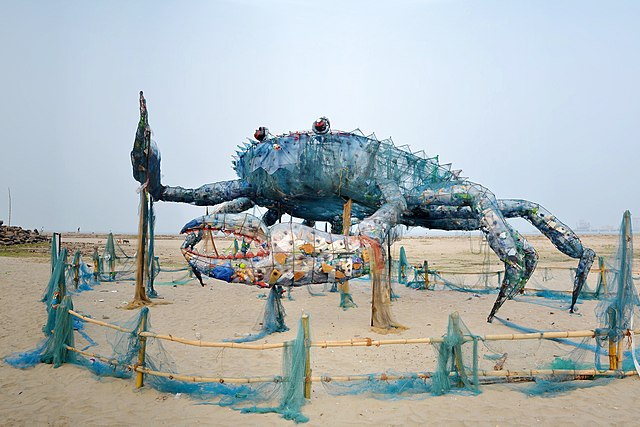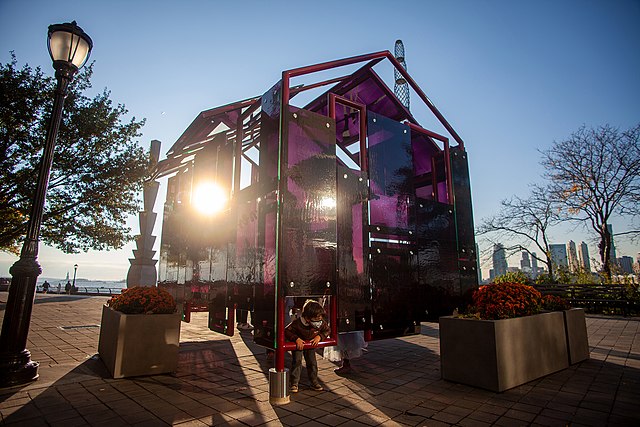Installation art is an artistic genre of three-dimensional works that are often site-specific and designed to transform the perception of a space. Generally, the term is applied to interior spaces, whereas exterior interventions are often called public art, land art or art intervention; however, the boundaries between these terms overlap.
Rachel Whiteread, Embankment at Tate Modern, London
An installation art of Mad crab created with waste plastics and similar non-biodegradable wastes at Fort Kochi.
Visitors interact with a couple in bed, inside one of the many environments of La Menesunda (1965), one of the earliest large-scale installations in art history.
Allan McCollum.The Shapes Project, 2005/06
Public art is art in any media whose form, function and meaning are created for the general public through a public process. It is a specific art genre with its own professional and critical discourse. Public art is visually and physically accessible to the public; it is installed in public space in both outdoor and indoor settings. Public art seeks to embody public or universal concepts rather than commercial, partisan, or personal concepts or interests. Notably, public art is also the direct or indirect product of a public process of creation, procurement, and/or maintenance.
The Spire of Dublin
Nanas by Niki de Saint Phalle in Hanover, Germany
Chicago Picasso, designed 1962–1963, installed 1967
Mildred Howard's "The House That Will Not Pass for Any Color Than its Own" in Battery Park City, New York City








